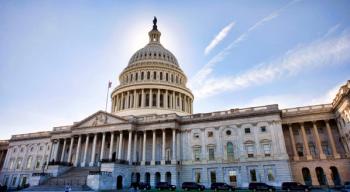
ACA Exchanges: Price still king
Win for silver plans signals need for education
Although plans had little claims data in advance of the 2015 rate-setting process, price and consumer education are still the two most important variables for health plans to consider next year.
“Price was the only differentiator,” says Kathleen Oestreich, chief executive officer of Meritus Health, Arizona’s co-op health plan. “Most consumers did not shop product and network as carefully as they probably should have. They were very much focused on buying the cheapest plans, period.”
Tom Snook, FSA, MAAA, a principal and consulting actuary at Milliman Inc., agrees that buyers were more price-sensitive than many anticipated.
This price-driven buying behavior can be a sign of how much education exchange buyers still need. If buyers focus on obtaining the least-expensive plan available, they may not understand how their choice will impact them financially if they should need a significant amount of healthcare services. Without a greater understanding of how health plans work, members may purchase a plan without fully understanding the implications of having more limited benefits and higher first-dollar liability.
Copper Plans versus the Knowledge Gap
Proposals to add a “copper” metal level below the 60% actuarial-value bronze tier to allow for a tier of lower premiums could also exacerbate the confusion among consumers when trying to choose an appropriate plan for their needs. A lower premium would logically translate to higher out-of-pocket costs.
“The previously uninsured, low-income consumer does not have the financial ability to pay large out-of-pocket costs,” says Oestreich. “These plans could leave providers exposed if consumers can’t cover those out-of-pocket costs.”
Instead of offering a copper tier of plans, she suggests that it would be better to focus on educating consumers about the differences between existing tiers so that they make better purchasing decisions.
Copper plans could also create confusion by offering yet another round of choices for buyers. Kentucky Health Cooperative kept its offerings simple by limiting choices at each metal tier, explains Janie Miller, CEO of the Kentucky Health Cooperative. She considers this to be a key marketing advantage for the co-op.
Even so, Miller beefed up call center staffing to handle unexpectedly high call volume as confused consumers, new to purchasing health insurance, flooded the phone lines. Not only did the call center handle more calls than expected, but these calls took much longer on average.
“These consumers need to develop healthcare literacy and need more help navigating the system,” says Miller. “After people buy, we had to help them understand how to use the product.”
Adding more tier options at this point would make the purchasing process even more complicated for these consumers.
Others, however, do see a role for a copper tier. For example, copper plans could work for higher-income individuals who do not consider themselves at high risk for health problems. However, it makes sense to wait to implement such plans to give more time for prospective members, navigators, and brokers to learn more about when and for whom these plans might be a good choice.
“I don’t expect these plans to be a viable option for 2015,” says Becky Ditmer, a principal in Ernst & Young’s healthcare advisory services practice.
Setting Rates
Because of the confusion accompanying the rollout of the insurance exchanges, they have not yet yielded much insight into how accurate rate setting will be for 2015. However, this lack of data is not surprising to executvies of health plans. “They knew going in that they would be flying not entirely blind but close to it for 2015,” says Snook. “Even if they know their risk profile they don’t know how they compare to the rest of marketplace.”
For the federally operated marketplace, rate filings are due this month, while state exchanges have various deadlines.
Kentucky Health Cooperative attracted 75% of all commercial health enrollment on that state’s health insurance exchange, but that does not mean the co-op has more data than any other carrier in the state. “It doesn’t matter if you have 50,000 members or 2,000 members, the problem is that we are sitting here at the end of April without enough data, other than some pharmacy data, to give us an advantage in the marketplace,” says Miller. “It might be three years before we get real credible claims data.”
To fill in the blanks, health plans are analyzing prescription drugs utilization data and any other available information. Even that data has limited utility, however. For example, plans expect higher claims activity from members who purchased health insurance in January than they do from members who purchased coverage just before the deadline.
“There is a definite belief that those in the first wave had a higher interest in gaining insurance because they had a higher need,” says Sandra Hunt, MPA, a principal with PricewaterhouseCoopers. “Those who purchased coverage in January also tend to be older than later enrollees.”
“Most payers will be using the same assumptions as they did to price in 2014 as the experience in claims history, medical and care management is still limited,” says Ditmer. “However, given some of the administrative challenges witnessed to-date, including difficulties in managing the enrollment, premium billing, and additional phone calls, plans are now evaluating the cost to administer to the exchanges and may adjust those assumptions.”
Rating Wild Cards
There are plenty of other wild cards that could impact risk profiles and costs for plans in all tiers. For example, the decision to allow consumers to keep existing health plans-the so-called transition plans-that do not meet the requirements of qualified health plans was expected to impact exchange plans, although the degree of the impact has yet to be determined. Several states are allowing carriers to extend non-compliant plans through 2016.
“Because 2014 rates were set by plans before the transitional policy was announced, current rates do not reflect the selection impact,” says Melinda Dutton, a partner with Manatt Health in New York, New York. “It is generally assumed that only healthy individuals with low-cost plans have an incentive to keep transitional plans; the rest of the population is likely to find better options on the exchanges.”
With the Congressional Budget Office projecting that 1.5 million individuals will continue coverage through transitional plans in 2014, this could cause rates to rise in 2015, she says.
Another wild card is the fact that “people who don’t qualify for subsidies could be shopping off the exchanges,” says Kevin Coleman, head of research and data for HealthPocket, Inc. “The question is, how will that impact the risk pool?”
Low enrollment in some states could also throw a wrench into rate setting for 2015. Arizona, for example, which uses the federal exchange, saw low overall enrollment even though the state has a very high percentage of uninsured residents. “As a carrier, you are left with much a smaller pool of potential purchasers,” says Oestreich.
The result is that “plans will be scrambling to generate rates based on fairly limited data in what continues to be a fairly dynamic market,” says Dutton.
More Competition
It is no secret that several large carriers took a wait-and-see attitude and did not participate in the public exchanges in 2014. While co-ops have been focusing on gaining enough critical mass to be viable, commercial carriers are considering how much of an opportunity the exchanges provide for them and if they can make money by selling policies on them.
In 2015, these carriers could jump into the exchange marketplace with new plans. “A number of health plans that sat on the sidelines for 2014 are talking about coming into exchanges in 2015,” says Hunt. “This suggests that they see some opportunity.”
For consumers, more plan availability means more competition, and more choice. “I think we’ll still see that state-by-state strategy for Aetna and UnitedHealthcare in 2015,” agrees Coleman. “They are going to have a better understanding of the potential volumes on the exchanges and, since the enrollment numbers were met this year, there may be greater interest.”
The Obama administration had a target of seven million exchange enrollees in Qualified Health Plans by the end of the first enrollment period. In early March, most industry observers were doubting enrollment would reach that level, but by the end of the month, the number had surpassed eight million.
Health plans estimate that 80% to 85% of those choosing an exchange plan have finalized their enrollment with a premium payment thus far.
2015: The New 2014
Because of the confusion and delays surrounding the first enrollment cycle on the public exchanges, 2014 is not likely to yield as many insights into the future of exchange plans as some had hoped.
“We had such a rocky start that 2015 could be what 2014 should have been,” says Oestreich. “There are hundreds of thousands of uninsured people in Arizona, so we are hopeful that working systems and technology and the right educational messages over the summer and early fall should lead to a much more robust cycle next year.”
Others agree that the transition will continue in 2015, as insurance companies learn more about the realities of the new health insurance market, according Coleman.
Snook agrees that what has happened in 2014 is not necessarily indicative of larger trends. “There is a sense that 2015 may be the first real year of ACA experience,” he says. However, he believes that health plans are still likely to see a lot of unexpected developments and that it will take several years for things to settle into a recognizable pattern.”
Newsletter
Get the latest industry news, event updates, and more from Managed healthcare Executive.






















































